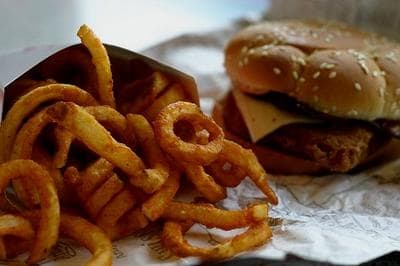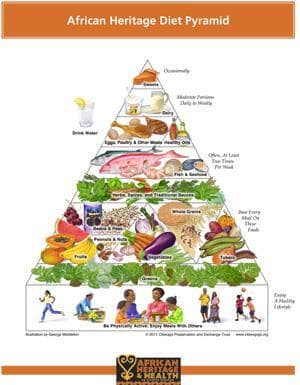Advertisement
'Old Ways' Of Healthy Eating By Ethnic Group

Home-cooked holiday feasts aside, our eating patterns are trending in the wrong direction.
Over time, we've tended to go from cooking our own food to relying on more processed, packaged and non-perishable fare. Researchers say this slow transition, along with other factors, has resulted in an increasingly obese population, rife with heart disease, diabetes and other illnesses.
Oldways, a Cambridge non-profit that promotes healthy eating, wanted to help solve this problem. The group spearheaded a 20-year research project that put together a panel of experts — community health experts, culinary historians, nutrition scientists and even a representative from Whole Foods who has worked with the WIC program for needy women, infants and children — to collectively come up with a healthy eating model.

They came up with more than one. Indeed, the culmination of their work is several diets based on the traditional eating habits and foods of people from the Mediterranean, Asia, Latin America and the Caribbean and Africa. There's even a vegetarian food pyramid. The African Heritage Diet pyramid is the newest of them all — you can read more about it on NPR's Shots Blog, and see the pyramid full size by clicking on the image to the right.
Each food pyramid comes with detailed lists that name specific kinds of foods for each level of the pyramid that are both healthy and traditional to that culture. Also at the base of every food pyramid: physical activity.
Some examples of the cultural-specific foods featured in the pyramids:
- Mediterranean Diet Pyramid: Anise, Fava, Feta cheese, lamb and Guinea Fowl
- Asian Diet Pyramid: Bamboo shoots, ginseng, Dragon Fruit, curry leaves and duck
- Latino Diet Pyramid: Chiles, Acai, Reggianito cheese, arepas and beef
- Vegetarian Diet Pyramid: Artichokes, Seeds, Polenta, cheeses and apples
- African Heritage Diet Pyramid: Callaloo, bananas, butter beans, palm oil and catfish
Advertisement
While anyone can follow any of the pyramids as a guideline for healthy eating, the pyramids were specifically designed to appeal to those ethnic groups. Instead of one standardized graphic with general rules, it's an attempt to broach the subject of healthy eating with foods familiar to each ethnic group.
Given that philosophy, Oldways President Sara Baer-Sinnott said the pyramids — all of them — are necessary.
"We've gotten away from eating real foods. In terms of inspiring, no one size fits all, and it's important to have lots of different options for people to follow, that fit within the (dietary) guidelines," Baer-Sinnott said.
"Research has told us over and over again that traditional diets — the old ways of eating — are really much healthier than the way Americans eat. (For) almost every possible (chronic) disease that you could imagine, there's a reduced risk through traditional diets."
By "traditional," Baer-Sinnott is referring to foods like beans, plants, nuts, vegetables and whole grains, as well as fish and healthy oils.
The federal government has been in the business of publishing dietary guidelines since 1916 (The Washington Post has a great timeline that walks you through the various diet models), but some in the nutritional science community put little weight on their recommendations. The latest healthy diet model from the Department of Agriculture is called My Plate, a graphic featuring four blocks of color representing fruits, grains, vegetables and protein, released earlier this year.
But according to Dr. Walter Willett, chairman of the Department of Nutrition at Harvard's School of Public Health, My Plate, and its predecessor, the food pyramid, are not really the objective, science-driven guidelines they should be — thanks in part to extensive lobbying by the food industry.
"My Plate is actually pretty useless. For example, it says that we're supposed to eat protein, but it doesn't say what form of protein, and in fact that's what really makes the most difference," Dr. Willett said.
Dr. Willett served as a consultant in the development of the Oldways food pyramids, including the African Heritage Pyramid.
"The African Heritage Pyramid (gives) a lot more information, and I think the right information, in terms of long-term heath and well-being," he said.
Readers, what's your take on the diet-by-ethnic-group model? How does your meal today fit into it? Please respond in the comments below.
This program aired on November 24, 2011. The audio for this program is not available.